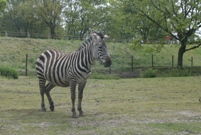During the summer, horseflies can be a real problem for horses, especially for those animals with dark skin. Sometimes these problems worsen, becoming illnesses or allergies. Horse owners have long used special horse blankets, some even impregnated with insecticides, to combat the problem. Fairly recently, researchers discovered that dark surfaces attract flies, due to the effects of polarisation. Light on a white surface is scattered in all directions, but on a dark surface, light is polarised horizontally, and this attracts flies. But how does it work with the stripes of a zebra?
For the study, wooden horse models were covered with various designs. These designs were then smeared with glue in order to count the number of flies attracted to each surface. The test results were unequivocal: the zebra pattern attracted the least flies, even less than a uniformly light surface. The idea is that flies become confused by the mixture of polarised and unpolarised light, and this renders the zebra pattern unattractive.
A horse-blanket firm went on to develop a zebra-stripe blanket to offer protection more natural than options using chemicals and pesticides.
The source for this piece is a column from the series ‘Afgekeken van de natuur’ (Copied from Nature).
Learning from nature
18februari2015
A horse in a pasture wearing a zebra blanket - that's an odd sight. Is it a joke (ha ha, zebras in a Dutch pasture)? No, there's more here than meets the eye. These blankets help keep horseflies at bay.
